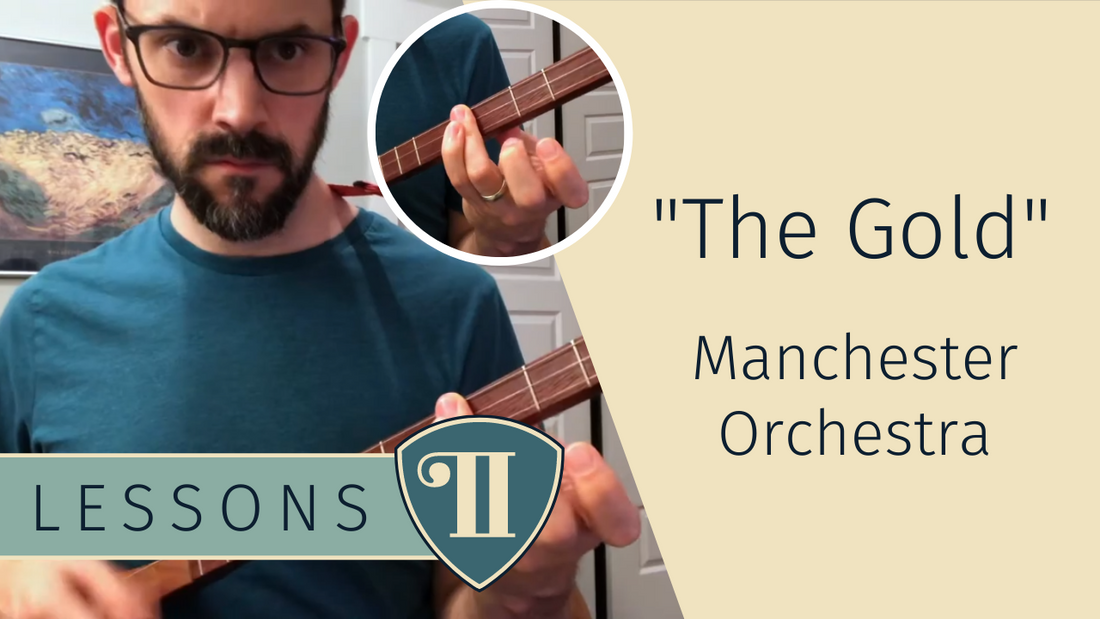
The Manchester -"The Gold" on Strumstick Dulcimer Guitar
Share
"The Gold" by Manchester Orchestra is in the key of D, so you can play along with the recording! Aside from the intro lick (melody) you can play this one very easily (and correctly) with just 1-Finger! So you're all set in a quick fashion.Perfect on a Grand McNally Strumstick or Seagull Merlin M4 dulcimer guitar.
One thing to note, too, is this song is in 6/8 time signature so it'll feel different than most songs (which are usually in 4/4) and strumming might feel awkward at first. Stick with it, you'll get it!
Video Transcription | Strumstick Rock Song Lesson
Manchester Orchestra is one of my favorite bands. “The Gold,” which came out on their most recent [as of right now] album A Black Mile To The Surface, is the radio single, and it is in the key of D.
If you have a Seagull Merlin or strum stick grand, it should already be tuned to D. Most Seagull Merlins are tuned to D, and the bigger the McNally Strumstick Grands are tuned to D standard so you should be able to play along with the recording which is primo!
This song is extremely straightforward for the chord part. It is a one-finger song: it’s just open D, and then the second fret (which is the third of the scale), and then you do the fourth fret (which is the fifth of the scale). That’s the verses.
There’s a slight change that comes in around the Pre-Chorus, I’m not sure how they break it down: “You don’t open your eyes, for a while you just breathe that moment down, 40 hours of roasting and I’m trying to translate you again.” That’s it- that’s the whole song for the one-finger version. So it’s just open second fret, fourth fret, with an occasional first fret thrown in there, and you will hear that if you just play along with the record- it’s once in a while so I can’t say it comes in right at the place every time.
But I wanted to get to the “lick”-thing that it’s known for which is that opening riff that goes in between verses. There’s a lot of coordination involved here, if you’re new to the instrument you can do this, it’ll just take some practice [which we’ll talk about in separate videos/articles?].
There’s a couple of different ways you could approach this: the way that I like it is to actually stum the whole instrument at one time which should make it easier in theory for a lot of folks. Then it’s just a matter of getting your left hand down so you’re not having to go with the individual strings. So your right-hand doesn’t have to be as nimble if you’re doing it this way. It will be trickier because you have to strum everything, and the strumming rhythm might catch you, but to me, it’s easier, and you can catch chords as well.
The way that the song goes it slides in, that’s how it is on the record. A slide is where I’m striking the strong on one place and sliding into the note I want. And I’m doing it with my middle finger intentionally so I’m set up to have my index finger, and I’m just doing it middle, index, middle. It’s going straight down the scale: 2, 1, OPEN, 2, 1, OPEN, 2 (in terms of frets).
So there’s a little bit of a rhythm you’ll want to listen to the record and get that down. It’s actually in 6/8, not 4/4 which we’re interested in (1, 2, 3, 4). With 6/8 it’s that sort of a swing feel that wants to be filled in a little bit along the way. That’s why I like to have the rhythm be covered with the full-string version.
What I do there is: “Lick,” bar the whole thing with my middle finger (cause I’m already there), then with my ring finger so I don’t have to slide all the way up (but you can do that).
So some options there. [If you have questions, throw them in the comments there.] I may have missed something, but that’s how I would approach this song. It’s pretty straightforward, and see what you think.
